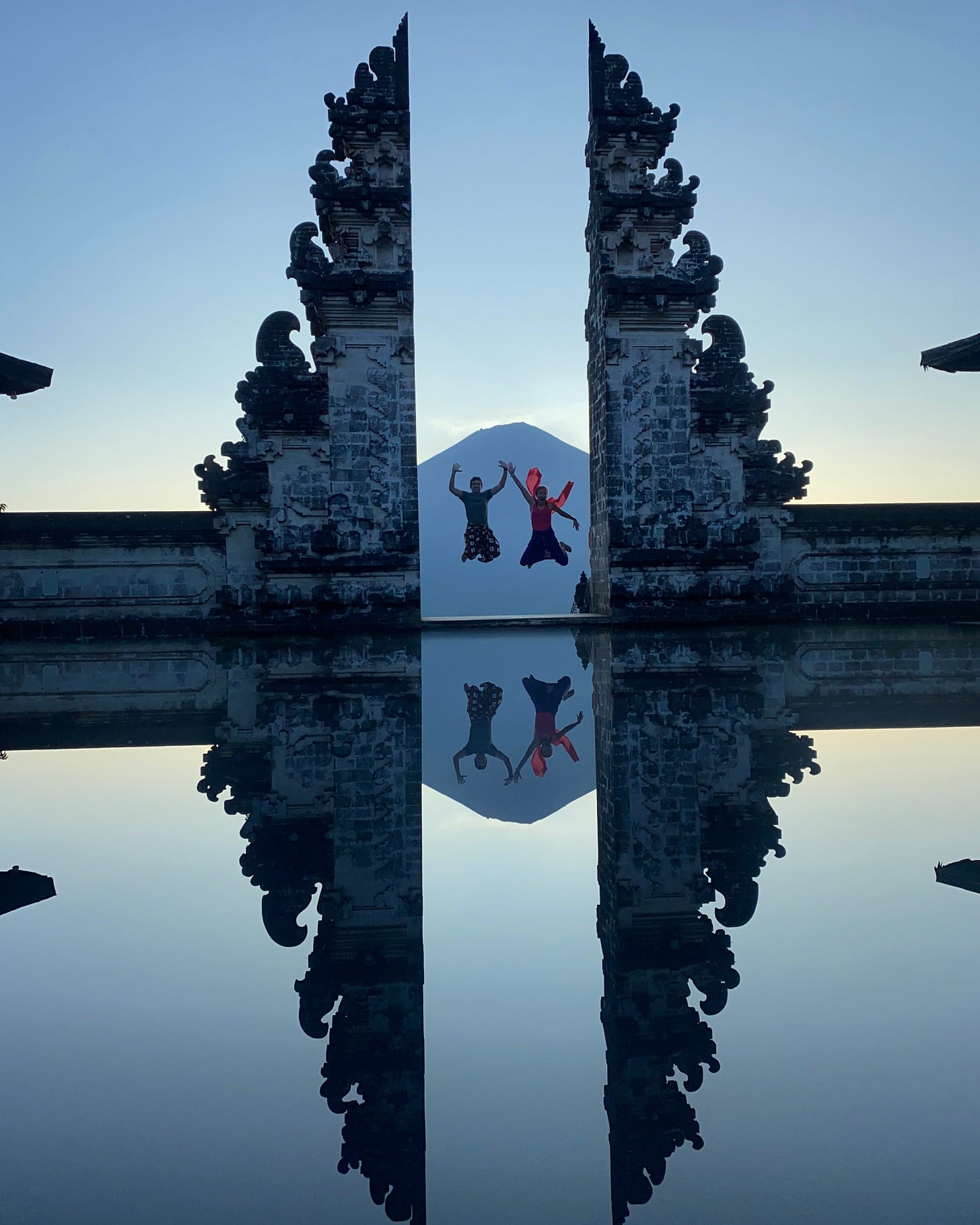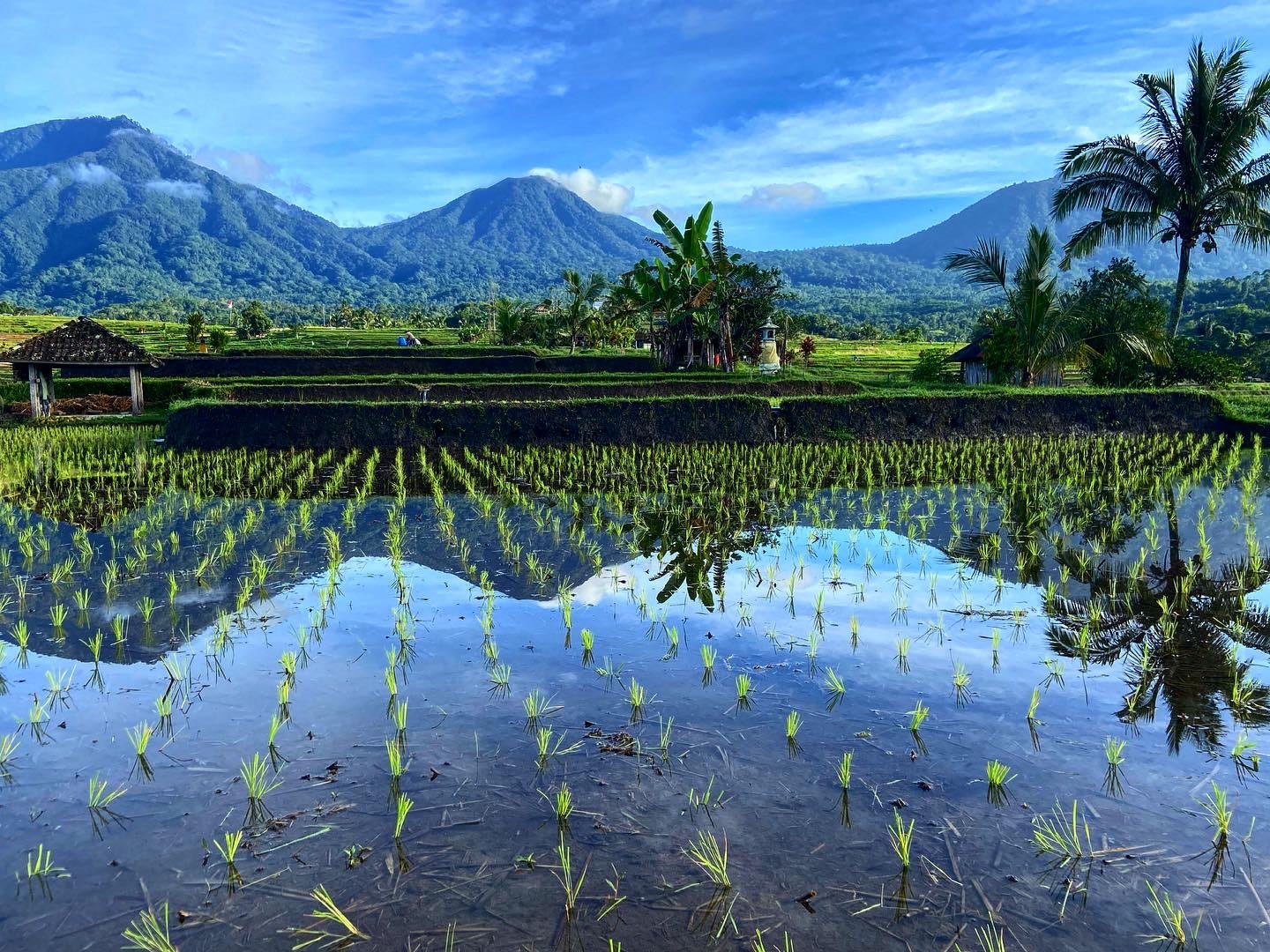Hello from Indonesia! It has been a few weeks since I last newslettered; after leaving Borneo we spent about a week on Java (Jakarta, Yogyakarta, and Bromo Tengger Semeru National Park), two weeks on Bali, and one week on the beaches of Gili Trawangan (ubiquitously known as “Gili T,” even though as far as Indonesian words go, Trawangan isn’t very difficult!).
While traveling, we often muse about what the beforetimes were like. We’ve spent the last almost three weeks in Indonesian Tourist Land (aka Bali and the Gili Islands) and while we’ve seen more foreigners in these three weeks than in all our preceding travels combined, we’re well aware that tourism is nowhere near its pre-Covid levels. In 2019, Indonesia had the 9th fastest-growing tourism industry in the world, with Bali leading with 6.3 million direct foreign tourist arrivals (many of whom take the short boat ride to visit the Gili Islands as part of their trip*). Compare that to 2020, when Bali had 1.05 million foreign visitors, and 2021 when the island had just 45 direct foreign tourist visits. The tourist sector devastation is reflected even more starkly across the country. In Yogyakarta, as we stayed on what had clearly once been the backpacker traveler street, we were informed that “all the restaurants closed,” a slight exaggeration but not too far off the mark when it came time for us to find dinner.
Anyway, Bali—and it’s “cultural capital” of Ubud specifically—was a trip. Our first morning we went to one of its many vegan cafes, and while enjoying our smoothie bowls we overlooked a well-lit high-ceilinged room full of tattooed young-ish people in athleisure typing away on MacBooks. From our beanbag chair vantage point we overheard one white girl telling a white guy that she “really connected with the Bhagavad Gita” and two women discussing their yoga schedules for the week. I could be in San Francisco. (Or any American city for that matter.)
Outside of Ubud, however, the vibe was much more along the lines of what we’ve seen elsewhere — mostly empty guesthouses repairing out of date rooms and begging us to leave positive reviews online (we do!). Almost everyone who goes to Bali stays in Ubud or the south (where the big city and surfing beaches are), if anything taking day trips to other places around Bali. We, however, wanted to see more of the island, so in addition to Ubud we stayed at the foot of Mount Batur (north), along the rice terraces of Jatiluwih (west), and on a flowered hillside next to the Tirta Gangga Water Palace (east).
From Bali we took a fast boat to Gili T (just 90 minutes), a tiny island off of Lombok famed for being full of drunk “gap year” Aussies and Brits, packed bars and clubs and party hostels. People we know who traveled here before Covid almost uniformly describe it as “too much” with a mildly disgusted nose scrunch and head shake.
Now there are certainly not zero drunk Aussies and Brits, but it’s more like restaurants on the beach trying to entice you with specials and enthusiastic invitations (Hello yes dinner! Hello yes cocktails! Hello yes buy something! Basically people are just constantly shouting Hello yes at me) and mostly empty bars playing loud music, with just a few places attracting anything that could be remotely called a “crowd.” Not “too much” at all if you enjoy a sunset drink, excellent pizza made by an expat Italian, Indonesian musicians covering your favorite hits from the 2010s,** and the option of going “out” until midnight (luckily the loud music stops at 12!).

I’d guess that half the businesses on the island are closed. You step off the main strip and it’s pretty post-apocalyptic — crumbling hotels and deserted storefronts with a smattering of local warungs (restaurants), laundries, and snack stands. We had planned to spend a couple days on Gili T to experience the party island, and then move to the “more chill” Gili Air. But after a snorkeling trip stopped on Gili Air for lunch at a functioning restaurant amid literally collapsing buildings, we decided to stick with Gili T where there are plenty of options to keep us fed and entertained. Pre-pandemic over half the jobs on Bali and 70% of the economy was linked to the tourism sector; I imagine in the Gilis those numbers are much much closer to 100%. Here’s where the wondering comes in though; I’m basing my sense of the beforetimes on hearsay — this is a “developing” country so I imagine that some state of disrepair was always the norm? But I can’t imagine it was this level. I certainly don’t mind the reduced level of bro-y-ness, I just feel bad for local businesses. [Linked articles are more about Covid’s impacts on the Gilis and in Bali.]
It sounds depressing because it is if you think about it. BUT this is certainly not a depressing place to be! Bali was beautiful, and Gili T is a very pleasant place to relax for a week. (As I have mentioned previously, I could read on beaches forever.) Locals are incredibly nice and enthusiastically friendly, which I assume is part cultural, and part relief to see the tourists return. Indonesia really does intentionally concentrate its tourism promotion in these two areas; in the words of a friend who lived in Jakarta, “it feels manufactured because it is.” That’s not to say that manufactured is necessarily a bad thing though! I do enjoy cappuccinos with foam art and smoothie bowls and nice guesthouses and not sharia law.

I am however really looking forward to seeing what the rest of Indonesia is like! Stay tuned for a post about sunrise volcano hiking (my new favorite thing?) once we climb our third—Gunung Rinjani on Lombok—in a few days!
* Data on tourist numbers on the Gili Islands is much more difficult to come by since they don’t have an airport and there’s no government-run boat service from Bali (just private fastboat companies).
** I am quite literally overhearing our closest bar play “Smack That” right now.







love the pictures